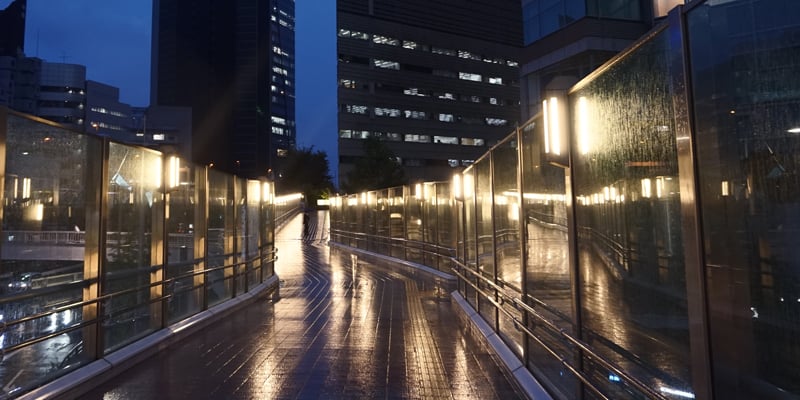
The arrival of Fall has a different relevance for people in different regions of the U.S. In northern areas Fall can be symbolized by changing leaves and the need to start preparing for winter weather, while southern regions breathe a sigh of relief when the sweltering heat of summer comes to an end, easing the load on climate control systems.
But for all parts of the country Fall brings a decrease in daylight hours – and the need to re-evaluate the exterior lighting on your property. You may find that some of the lighting has been damaged by summer storms. Perhaps trees or shrubs have grown over some of the fixtures, reducing their effectiveness. If there are outdoor lights on a timer instead of a photovoltaic sensor, have the timers been adjusted to accommodate for shorter days?
Good quality lighting in parking areas and around entryways has obvious benefits, starting with the comfort of your employees and guests. Trips and slips can potentially be reduced by effectively illuminating walkways and parking areas, and this diligence can be beneficial in defending against allegations of negligence. An overall sense of comfort and security is associated with good nighttime visibility.
A building and its surroundings which are adequately lighted at night convey an inviting impression, presenting the property as vibrant and well maintained. This is particularly important for retail spaces which may be open for business well after dark, but has a meaningful impact on all types of properties.
Perhaps the most important reason to evaluate your exterior lighting is related to security. After many years of inconclusive data on the effectiveness of lighting on lowering crime rates, a standout new study published in May of 2019 by the National Bureau of Economic Research provides evidence of a powerful relationship. In a randomized trial in densely populated public housing areas in New York City, new light towers were installed in 40 out of 80 housing complexes. The intensity of light was also randomly varied within those 40, allowing for apples-to-apples comparisons of the effect that additional outdoor light had on crime rates.
The results were telling, and are captured in this statement: “We estimate that the introduction of marginal lighting reduced outdoor nighttime index crimes by approximately 60 percent and, by at least 36 percent, once potential spatial spillovers are accounted for. These findings provide the first evidence that the physical environment of cities and communities is a key determinant of serious crime.”
With a vast array of exterior lighting options, and in some cases regulatory codes (dark sky laws) and environmental impact to consider, the expertise of a lighting contractor or security integrator may be a worthwhile investment for your property.
